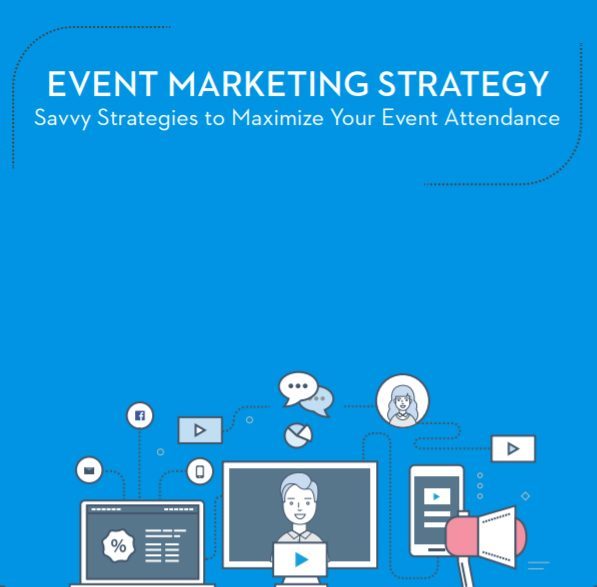How to Increase Participation + Reach for Virtual Events
Virtual events were infrequent before the COVID-19 pandemic reshaped the world. Now, they’re everywhere. This transition has been hard for some businesses. Trying to engage participants virtually is not the same as it was with in-person events. Luckily, a virtual event can have the same excitement and reach as the ones before the coronavirus — with the right tools and tips, that is.
The Challenges of Engaging Online
As you’ve likely discovered, business events take on new challenges in the digital world. Something as basic as spreading the word looks different — the announcement must have a link to a platform where you’ll host the event. Bigger aspects, too, like question-and-answer sessions, are now changing.
The reality, however, is that this transition to the digital world is necessary. Until a vaccine or cure comes along, people around the world will be social distancing, wearing masks, and finding alternatives to in-person gatherings. And with virtual events, getting people to stay focused is critical.
A Lack of Focus
Participants tend to zone out during virtual events or meetings. If the content isn’t engaging enough, they have little reason to pay attention and learn about your products or services. Plus, people are more likely to have distractions in their homes — pets, families and kids, chores, and friends.
Additionally, technical difficulties can occur at any moment. While the same is true for in-person events, tech problems would only delay the gathering. These issues can completely derail or halt virtual events altogether.
A Lack of Socialization

One of the most beneficial aspects of in-person meetings and events is that attendees get to socialize with one another. With diverse gatherings of professionals, a businessperson could find a connection they didn’t know they were looking for. Networking is key for building and expanding a company. You never know if you’ll find a new employee, partner, or even friend.
In the digital realm, though, it’s difficult to create those same dynamics. People like to talk in groups and one-on-one. The traditional setup of a virtual event has people join the meeting, watch, and potentially get answers to their questions if the host can spot them in the chat.
A Lack of Interactivity
Part of what makes events exciting for people and businesses is the abundance of possibilities. Are you there to learn more about an industry? Would you like to invest in a product a company is advertising? Is your company seeking to expand? Whatever the meeting is about, interactivity is key.
All is not lost in the virtual world, though. Thankfully, technology is advanced enough to keep up with the needs and demands of businesspeople all over the globe. Socializing can then thrive during your meetings, no matter what.
Solutions for Participation and Reach with Virtual Events
With different tips, tools, and platforms, you can transform your virtual meeting into one that people will remember. Here’s how:
1. Bring Your Attention to Detail to Every Aspect of Event Planning
The first step is to get everything in order, which is a surprisingly easy step to overlook. However, carrying out this process effectively will bring about a successful presentation and discussion.
For a professional business event, you and your colleagues must treat it with the same care as you would any in-person meeting. That means you should begin by marketing it well. The transition to digital business will happen as quickly as you make it. It’s a process, but using social media posts and profiles, email campaigns, multi-platform advertisements, and general online networking will get the word out.
The goal is to get as many people to register and attend as possible, while still giving the conference the feel of an exciting and exclusive event.
For the event itself, find a spot in your home where the background isn’t distracting — visually or in terms of noise pollution. High-quality video and audio will make all the difference as well, so be sure ahead of time that your equipment and internet speed are up to the task.
Then, work with your team to outline exactly how you want the presentation to go (or hire a professional who designs virtual events for a living to help). Account for the excess time when gathering the participants and consider any questions people may have. Cover what you want attendees to learn about your business or service. With clear communication and professionalism, the event becomes more engaging.
2. Do Thorough Research on the Unique Digital Tools at Your Disposal

You’re not alone when you host your business event. You’ll have your colleagues and co-workers there for support. However, you also have different tools as resources to help you engage your audience.
Multiple video-based platforms are taking off right now due to current public health concerns. Tools like Zoom, Google Meet, Skype, Discord, Microsoft Teams, Zoho, MaestroConference and several others are the next best thing to face-to-face interactions and team collaboration in the age of global pandemics.
These tools are what you’ll use to host the event. Some of them distinguish themselves with unique features or presentation models that could help elevate your upcoming virtual experience.
For instance, VoiceVoice claims their platform helps create more authentic conversations using a combination of guided experiences and live video. Discord’s competitive advantage is its encryption technology. Zoho touts their zero-install model. GoToMeeting has transcription features and a virtual whiteboard. Skype is truly multi-platform but lacks some of the organizational features of some of the others. MaestroConference alleviates any worry about event registration by offering options such as unique registration PINs and customer training sessions.
Whatever you choose, be sure it has the feature set you need for the event you want to throw. You can offer a structured experience with one or a series of presenters, or you can go with the flow and facilitate conversations before or after the conference so participants get to break the ice and connect.
Find out which platforms will help you create interactive experiences. From effortless registration to screen-sharing, some tools optimize the logistics, and others provide interactive experiences, question-and-answer sessions, polls, messaging, and breakout rooms.
The most important thing you can do is to get creative with your event format and make the most of whichever set of tools you decide on. With current events being what they are, technology only gets you so far — you need to think outside the box to make your event stand out.
3. Use a Variety of Content and Presentation Methods to Interact With Your Audience
Now, with the technology foundation in place and the mission of engagement in mind, you can take the experience even further. You can use the concept of gamification to add fun to what could otherwise be a more formal meeting. For instance, trivia that results in a prize can bring friendly competition that still gets your main branding messages across.
When the meeting is over, remember to send attendees home with something to remember your company by. A “virtual gift bag” with merchandise, a test product, or a free trial plus contact information is an engaging note to end on. You can also mail these items physically if it’s not possible to send them digitally.
Adding a sense of light competition and demonstrating generosity adds a unique twist to your virtual events, ensures your event is talked about afterward, and helps make sure your next event is truly buzz-worthy.
A Brand New Event Style
Though virtual events have been around for a while, you now have the tools and tips to bring a brand new perspective to them. Growing your reach and increasing your engagement is possible. With these steps, you can adjust to the new normal of a COVID-19 world, which will likely stick around even after the pandemic passes.




